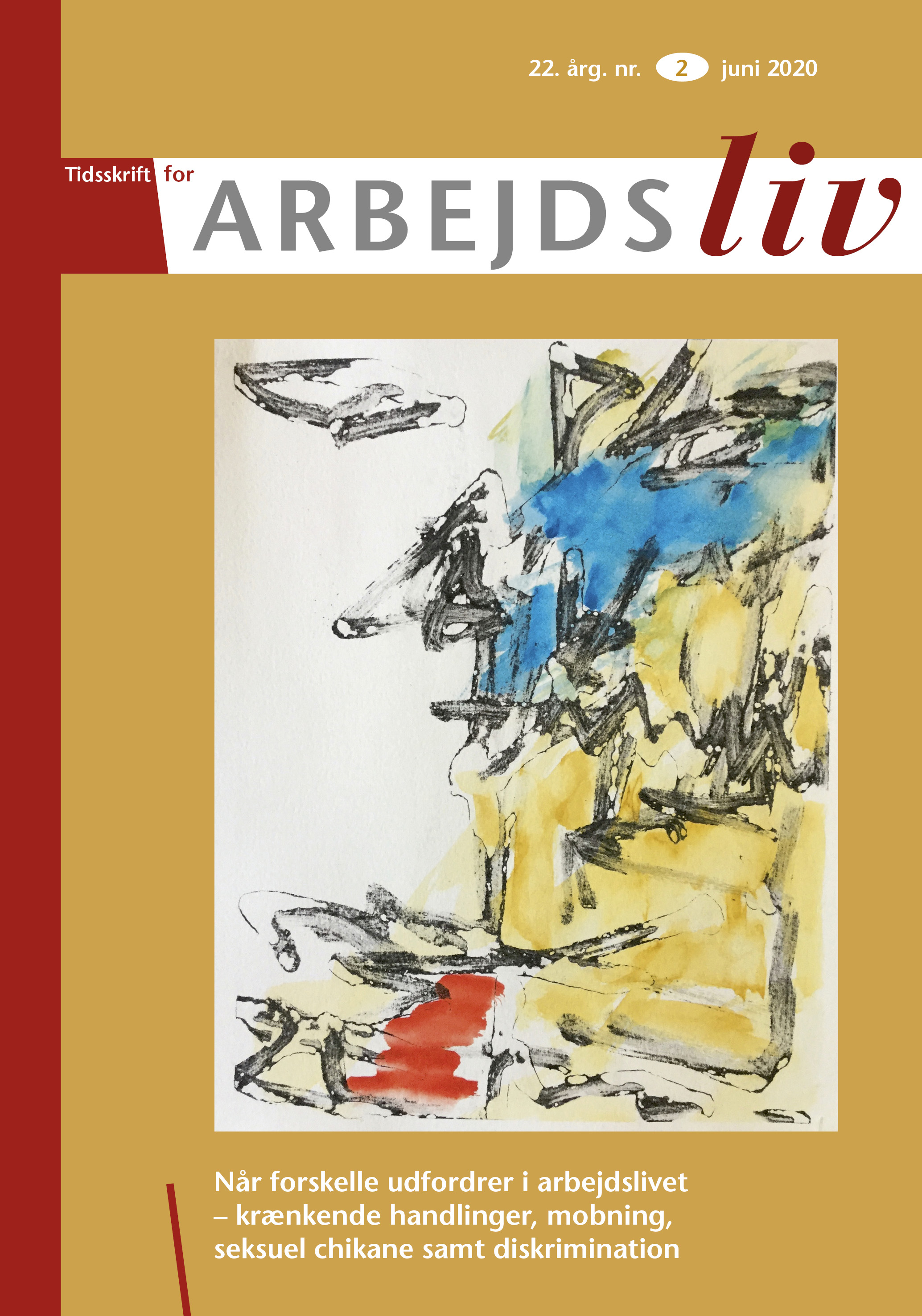Vidners rolle i forebyggelse af mobning: En undersøgelse af det teoretiske og empiriske grundlag for design af vidneinterventioner
DOI:
https://doi.org/10.7146/tfa.v22i2.121519Resumé
Ved at gribe ind overfor krænkende handlinger kan vidner medvirke til at forebygge mobning på arbejdspladsen. Forskning viser dog, at vidner til mobning ofte er passive, eller ligefrem støtter udøveren. Dette indikerer et behov for at udvikle interventioner, som får fl ere vidner til at gribe konstruktivt ind overfor krænkende handlinger. Interventioner bør igen designes og implementeres på basis af empirisk funderet teori, fremfor erfaringsbaserede formodninger. Herværende artikel, som primært er konceptuel teoretisk, udgør et forsøg på at etablere en teoretisk og metodisk forståelsesramme, som forskere og arbejdsmiljøprofessionelle kan anvende som basis for udvikling, implementering og evaluering af interventioner rettet mod vidner til mobning på arbejdspladsen. Bartholomew og Mullens (2011) model over interventionsforskning anvendes til at identifi cere faser i udviklingen af en vidneintervention samt elementer og processer, som kunne indgå i en sådan. Der præsenteres to teoretiske modeller, O’Reilly og Aquinos (2011) model over tredjeparters reaktioner på oplevet uretfærdighed og Attribution-Emotion Modellen for Stigmatisering (Dijker og Koomen, 2003; Weiner et al., 1988), som beskriver centrale mekanismer involveret i vidneadfærd. Modellernes relevans vurderes tentativt ud fra sekundær empiri, og der identifi ceres yderligere organisatoriske forhold af betydning for vidners reaktioner på krænkende handlinger. Med udgangspunkt i den præsenterede model og forskning foreslås konkrete elementer og processer, som kan indgå i en vidneintervention.
Downloads
Publiceret
Citation/Eksport
Nummer
Sektion
Licens
Forfattere, der publicerer deres værker via dette tidsskrift, accepterer følgende vilkår:
- Forfattere bevarer deres ophavsret og giver tidsskriftet ret til første publicering, samtidigt med at værket ét år efter publiceringen er omfattet af en Creative Commons Attribution-licens, der giver andre ret til at dele værket med en anerkendelse af værkets forfatter og første publicering i nærværende tidsskrift.
- Forfattere kan indgå flere separate kontraktlige aftaler om ikke-eksklusiv distribution af tidsskriftets publicerede version af værket (f.eks. sende det til et institutionslager eller udgive det i en bog), med en anerkendelse af værkets første publicering i nærværende tidsskrift.
- Forfattere har ret til og opfordres til at publicere deres værker online (f.eks. i institutionslagre eller på deres websted) forud for og under manuskriptprocessen, da dette kan føre til produktive udvekslinger, samt tidligere og større citater fra publicerede værker (se The Effect of Open Access).





